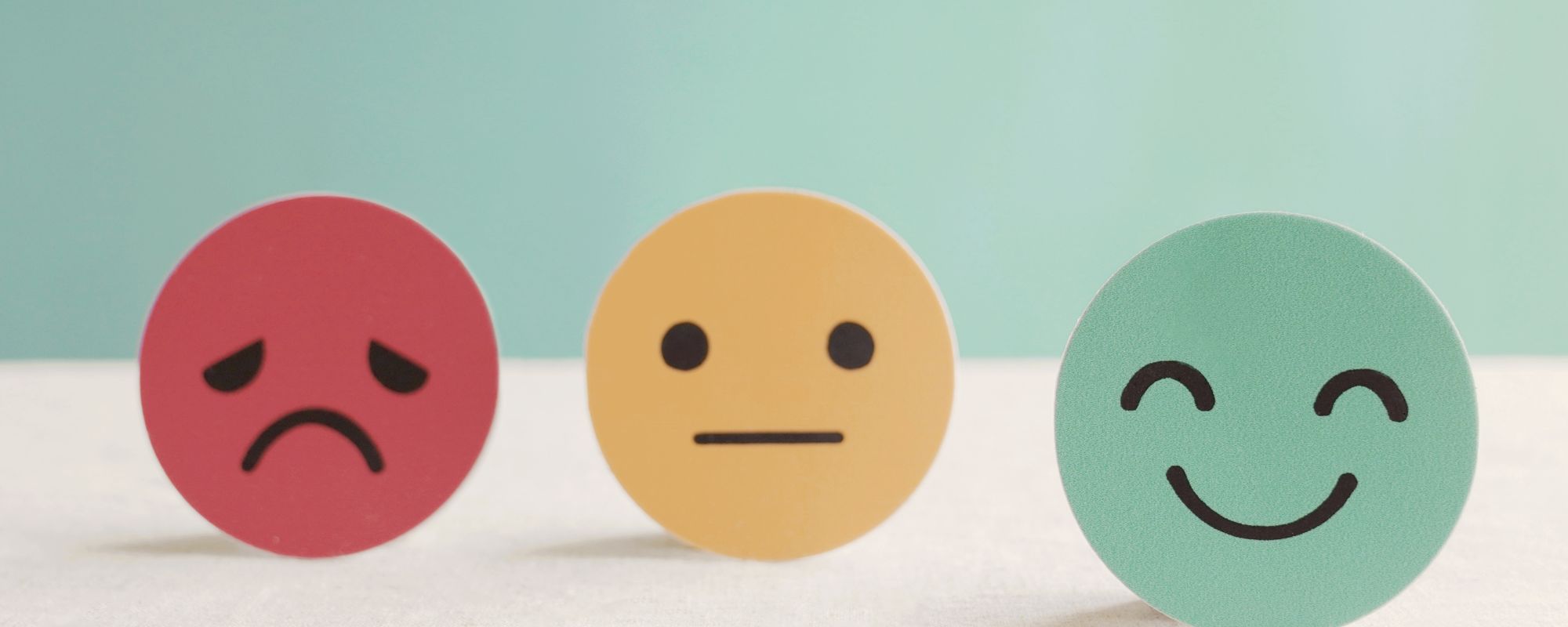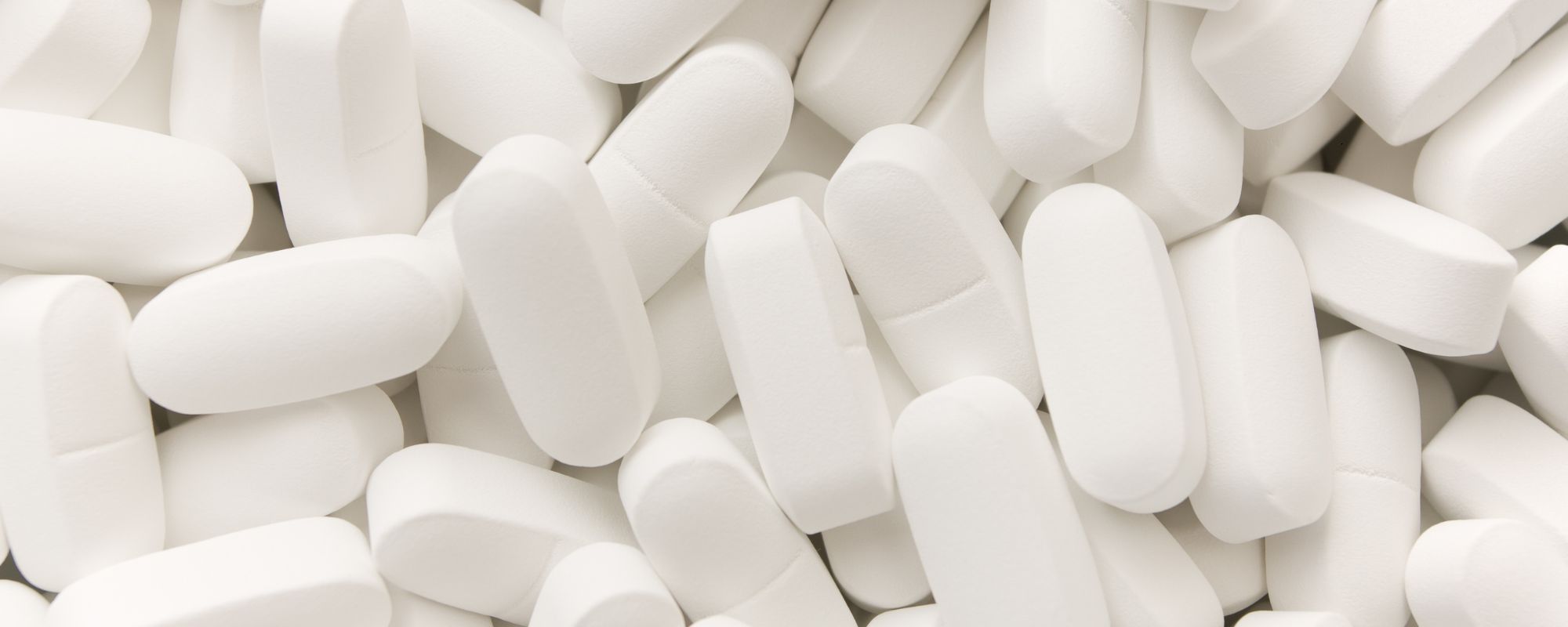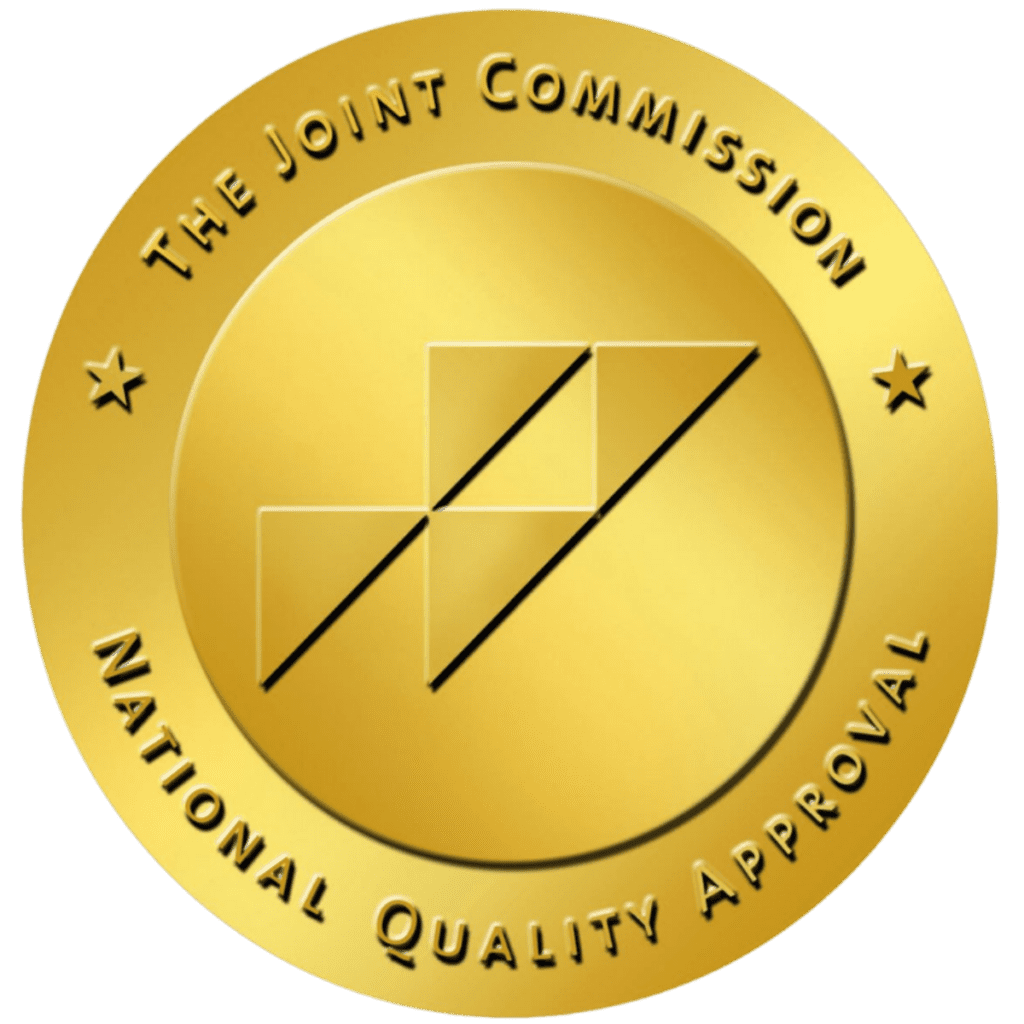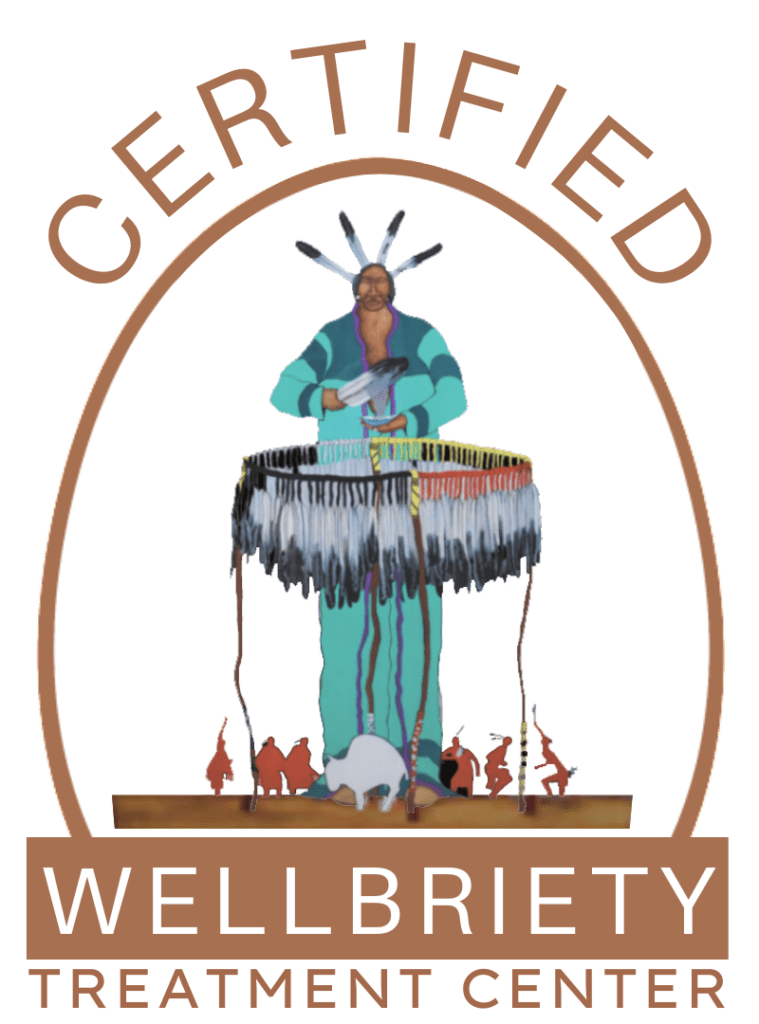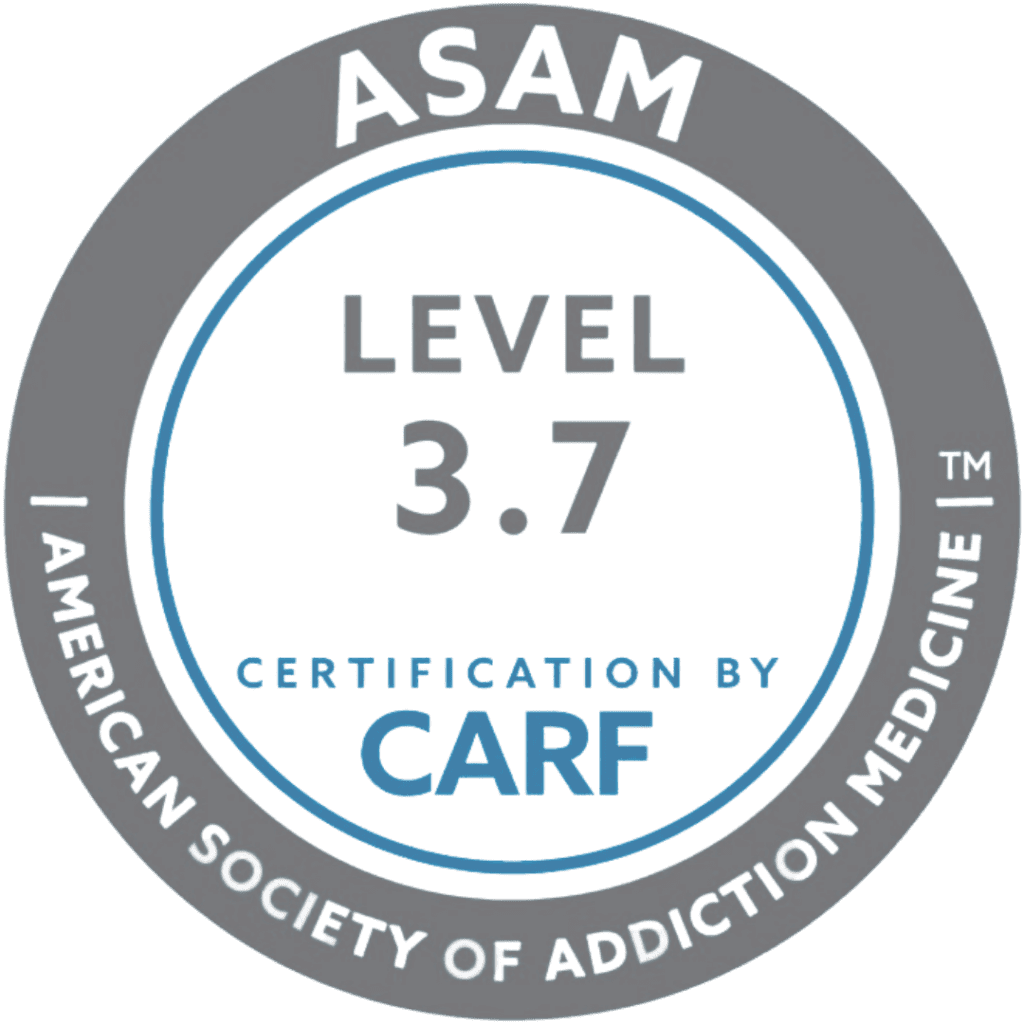There aren’t many instances that call for you to show vulnerability and bravery at once — but deciding to enter rehab may be one of those times. When you enter treatment for drug addiction or substance abuse, you’re taking accountability by both acknowledging you need help and actively pursuing it.
Statistics from the Substance Abuse and Mental Health Services Administration (SAMHSA) show that you’re not alone in making this decision:
- In 2023, 48.5 million (17.1%) people reported having a substance use disorder; 58.7 million (22.8%) with any mental illness; and 20.4 million (7.9%) with both (co-occurring disorders).
- The same year, 11.7 million (4.5%) people received substance use treatment; 59.2 million (23%) for mental health.
- More than 22 million adults who have struggled with addiction and 42.7 million with mental health struggles now consider themselves to be in recovery or recovered.
Why do so many people claim success in recovery? One explanation is that inpatient treatment centers offer a foundation for real, lasting change. But what happens during inpatient addiction treatment, and how can it help? Keep reading for more insight into what to expect from inpatient rehab centers if you’ve decided to seek help, setting you on the path to hope, healing, and recovery.
What Are Inpatient Treatment Centers?
Inpatient treatment facilities are also called residential treatment centers because they call for you to reside onsite for the duration of rehab. Here, you’ll live at the facility, where inpatient rehab usually lasts anywhere from 30 to 90 days, enabling you to devote your 24/7 focus to recovery, in a comfortable, home-like atmosphere with all the comforts you’d expect and more, much like an extended luxury hotel stay.
You may wonder why you’re required to step away from your life during inpatient treatment. Can’t you just attend treatment and go home after the day’s sessions? Inpatient addiction treatment is specially designed for people who require round-the-clock care. You might have a drug addiction so severe that your daily use has affected your health that medical intervention is necessary, or you run the risk of relapsing or overdosing.
Other times, someone’s mental health may have deteriorated to the point that, following a diagnosis, they’re unable to care for themselves, live independently, hold down a job or maintain interpersonal relations. The intensive, full-time care that inpatient provides is borne out of necessity.
Thankfully, staying in an environment that promotes peace, positivity, calm, and healing removes you from the stressors, triggers, and access to substances that may exist in your everyday environment. This distinctive separation is deliberate and creates space to focus on the issues driving your addiction or mental health challenges without distractions.
One misconception about residential rehab centers is that you’re left to your own devices, isolated from the world — and it’s a myth that needs dispelling. From the time you enter the doors of rehab to the moment treatment ends, you’re surrounded by staff to bolster you up, trained to help you through the challenges and milestones of recovery, step by step.
Inpatient Rehab vs Outpatient Rehab
One key difference between inpatient treatment centers and outpatient treatment centers is where you spend your time in therapy.
Outpatient treatment enables you to attend your treatment sessions during your appointed daytime hours throughout the week and return home each afternoon or evening. It’s heralded as a smart, flexible compromise for people who need therapy for drug addiction or mental illness but also can’t neglect other responsibilities, like work, school, or family obligations.
On a spectrum of symptomatic severity, outpatient treatment is well suited for people whose substance use or mental health disorders are milder and don’t impede or interfere with daily functioning. It’s also an option if you’ve achieved a great deal of recovery in inpatient and can trust yourself, with the blessing of your therapist, to be on your own outside of treatment while managing cravings and coping with triggers without jeopardizing your recovery.
Inpatient treatment, on the other hand, is more appropriate when you need more structure and support to lean on. It’s often recommended if your home life is chaotic, unsafe or simply not conducive to recovery. You might live in a place with others who’ve enabled your drug use or pose a bad influence on your mental health. If you tend to face crises or struggle with relapses, the immersive setting of residential addiction treatment is safer and more focused.
Remember that inpatient and outpatient treatment both play important roles in helping you recover, and there is no one-or-the-other option. If you’re transitioning out of inpatient but still need more intensive care, Partial Hospitalization Programs (PHP) or Intensive Outpatient Programs (IOP) are also options that bridge inpatient and standard outpatient.
Medical Detox and Inpatient Treatment
Addiction to drugs or alcohol takes a gradual path — first, tolerance builds, then dependence develops, and addiction takes hold as your brain and body become more and more accustomed to a substance and its effects.
Eventually, you can’t function without a drink or addictive drug of choice, and quitting cold turkey can prompt a series of withdrawal symptoms that vary in seriousness. “Withdrawal symptoms can range from uncomfortable, as with opioid or caffeine withdrawal, to life-threatening, as with the discontinuation of ethanol or benzodiazepine usage,” notes a 2024 study.
Medical detoxification, or detox, is the process of safely clearing toxic substances from your system under professional medical supervision while managing and mitigating these withdrawal symptoms.
At inpatient treatment facilities, detox usually takes place in a separate clinical area where the staff can administer medication to reduce your discomfort and monitor your vital signs to make sure withdrawal isn’t taxing your body. Once detox is complete, you can begin proper treatment free of any trace of drugs or alcohol in the body that could diminish the effectiveness of therapy. The focus then shifts to the psychological, emotional, and behavioral roots of addiction,
Looking for quality treatment for substance abuse and mental health that’s also affordable? Aliya Health Group's treatment facilities accept most major insurance providers. Get a free insurance benefits check now!
Check Your CoverageWhat Can Inpatient Rehab Facilities Help With?
Residential treatment centers can treat a range of addiction and mental health conditions following a diagnosis by a clinician:
Addiction Treatment
Alcohol Addiction
According to the National Center for Drug Abuse Statistics (NCDAS), all forms of alcohol abuse, including alcoholism and alcohol use disorder (AUD), kill more than 3 million people each year. Alcohol is legal and accessible, making it easy to obtain and develop a dependency. The SAMHSA study adds that in 2023, 28.9 million people suffered from AUD.
The numbers only hint at the impact of alcohol addiction. What begins as an occasional drink with friends, family or over dinner can turn habitual and then lead to dependency, making inpatient treatment centers a necessity when alcohol becomes an all-consuming addiction. A full inpatient alcohol treatment trajectory involves detoxing from drinking, therapy, medication management (if needed) and a structured alcohol rehab support system in place to prevent the chance of relapse once you’re back in the real world, clean, sober and with a renewed lease on life.
Drug Addiction
Opioids
When opioids are prescribed, they can be highly effective in managing pain, like after you’ve had surgery. But drugs like fentanyl, methadone, oxycodone and hydrocodone are also very addictive when users begin taking doses more than instructed, leading many people to begin abusing opioids. More than 10 million people abuse opioids every year, leading to nearly 50,000 overdoses annually, notes the NCDAS.
This opioid epidemic can be curbed with the right treatment in place. If you’ve become dependent on an opioid painkiller after being prescribed it, help is available. At residential addiction treatment centers, treatment may include talk and experiential therapies to get your mood and body accustomed to life without leaning on drugs, and in some cases, medication-assisted treatment (MAT) to help reduce cravings and minimize withdrawal symptoms.
Cocaine
Cocaine is a powerfully addictive stimulant that’s often abused for the intensely euphoric effects it produces. Cocaine abuse affects people of all ages, races and backgrounds; according to the National Drug Intelligence Center, nearly 28 million people have used some form of cocaine at least once in their lifetimes, and statistics show that the rate of cocaine overdose deaths has risen.
Kicking cocaine to the curb can be difficult to do on one’s own. Withdrawal comes with deep cravings but often involves numerous psychological symptoms — including agitation, restlessness, depression and disturbing dreams — that can be easier to cope with under the controlled, supervised environment that inpatient drug treatment provides. Likewise, residential rehab centers give you distance from the environments and relationships that may have supported your cocaine use.
Benzodiazepines
Known as “benzos,” benzodiazepines are sedatives that you might know as the brand names Valium or Xanax. Commonly used to treat anxiety disorders, benzos, like opioids, can lead to addiction when users begin taking too much. Recreational users, aware of the drug’s effect, also run the risk of becoming addicted. Sadly, benzos were involved in nearly 17% of all drug overdoses during a recent 1-year period, with opioids involved in over 91% of those fatalities, notes the U.S. Centers for Disease Control (CDC).
“Physical dependence can occur when benzodiazepines are taken steadily for several days to weeks, even as prescribed,” says the U.S. Federal Drug Administration. “Stopping them abruptly or reducing the dosage too quickly can result in withdrawal reactions, including seizures, which can be life-threatening.” It’s just one reason why inpatient treatment facilities offer slow tapering off benzos under medical supervision to reduce the risks, in a comfortable, supportive, safe space.
Crystal Meth
Methamphetamines are synthetic, lab-created stimulants that affect the central nervous system, creating a euphoric high either by smoking, snorting or injecting it. Crystal meth is one of the most abused forms of meth, named for its translucent, rock-like appearance. The CDC notes that about 1.6 million people reported recent past-year meth use.
According to the National Institute on Drug Abuse, crystal meth poses several short- and long-term negative health effects, and when trying to wean off the drug, protracted withdrawal symptoms can range from depression and anxiety to physical pain, cravings and insomnia. Seeking help at inpatient treatment centers enables you to address both the physical and psychological attachment to meth, carefully detox from it and set upon a seamless recovery.
Mental Health Disorder Treatment
Anxiety
Everyone feels anxiety from time to time, but the difference between regular anxiousness and an anxiety disorder can mean being able to manage your symptoms and being consumed by them. Anxiety disorders affect 40 million adults per year, the most common mental illness in America, sharing symptoms like excessive worry, fear or dread (even in everyday situations), restlessness, fatigue, trouble concentrating, irritability, muscle tension or difficulty sleeping.
Treatment for anxiety disorders in inpatient treatment facilities offers a respite from the weight that anxiety can bring. In rehab, you may find that approaches like Cognitive-Behavioral Therapy (CBT) or meditation help cultivate mindfulness to your anxiety to find a place of calm.
Depression
Depression is more than feeling sad, though it’s a telltale sign pointing to the start of a depressive disorder. More than 264 million people live with depression, according to the Anxiety & Depression Association of America (ADAA), where the most diagnosed type is major depressive disorder (MDD), characterized by at least nine common symptoms including a chronic sense of hopelessness, worthlessness, fatigue, loss of appetite and even suicidal ideation.
For MDD, persistent depressive disorder, seasonal affective disorder and more, residential treatment centers become a place to rest your head and work through the maze that depression creates. Your therapist and peers in group support have your back, a supportive network who care about you to lean on.
Trauma
Trauma can echo through your life in ways that are hard to predict or control. It can begin from just a single traumatic event, like surviving a natural disaster or accident, or from long-held histories of childhood or sexual abuse or experiencing wartime combat. The National Center for PTSD (Post-Traumatic Stress Disorder) says that 6% of the entire U.S. population will have PTSD at some point in their lives.
Inpatient treatment facilities offer trauma-informed care — this means therapy is delivered with an acute understanding of how trauma affects the brain and body (which can remain repressed within) and with respect for your pace and readiness to engage and open up in a trusting environment. It might be through talk therapy, EMDR (a type of trauma-focused treatment) or expressing yourself through art.
Personality Disorders
Living with a personality disorder — such as bipolar or borderline personality disorder — often means being unable to regulate one’s emotions, resulting in extreme mood swings, impulsive behavior and a strong disconnection from oneself. Personality disorders can take their toll on your relationships and physical and mental well-being, affecting just over 9% of people.
One effective therapeutic lifeline for personality disorders offered at residential rehab centers is Dialectical Behavioral Therapy. DBT is a form of treatment that focuses on being mindful to one’s thoughts and emotions when you have difficulty regulating them. “DBT focuses on helping people accept the reality of their lives and their behaviors, as well as helping them learn to change their lives, including their unhelpful behaviors,” says the Cleveland Clinic.
Get confidential help from our addiction and mental health treatment facilities located across the United States. Call to join one of our quality programs today!
Speak With Our Admissions TeamWhat Is Inpatient Treatment Like?
When you enter an inpatient treatment facility, there’s a structured sensibility that’s held together by a special connection of programming, people and purpose with a common goal of getting you better, bolstered in your healing from addiction or mental health troubles.
Here’s a sample of what you can expect:
Safe and Supportive Living Environment
Two of the most integral, indispensable elements to inpatient treatment centers are the safety and support you’ll receive. Residential treatment centers represent a true safe space to rest your head, free of the stressors, the triggers or the exposure to substances that ultimately work against your recovery. As an inpatient, this means the chance to refocus your perspective and commitment full-time during your time here, where accommodations are comfortable, simple and secure, with shared or private rooms depending on your needs (and the Aliya facility you choose). If you’re coming from chaotic or unsafe environments, simply having a clean, stable home base to sleep, eat and focus on health is unto itself transformative.
Expert and Caring Staff of Professionals
The heart and core of inpatient treatment centers are formed by the people there to see you through one end of addiction to the other end of sobriety — doctors, nurses, therapists, case managers and support staff. The programming at residential rehab centers is comprehensive because the staff extends the same all-inclusive expertise in addiction, medicine, psychology, trauma care and holistic health. But more importantly is the promise, the pledge they make to connect with you not just through clinical means, but with care, compassion and a commitment to meeting your needs with dignity and respect.
Evidence-Based Psychotherapy
Residential addiction treatment comprises a series of different types of therapies that are evidence-based, meaning that they’ve been tested and proven effective in clinical settings to treat drug addiction and mental illness effectively. One type of psychotherapy is traditional one-on-one talk therapy, where you sit with a counselor or therapist; this could take shape through CBT, meant to help identify and change unhealthy thought patterns that inform addiction or poor mental health, DBT for emotional regulation or motivational interviewing to strengthen your commitment to total change. Then there’s group therapy, an opportunity to learn from the experiences of other people in treatment and gain their support when talking about your own struggles.
Holistic Therapy
Holistic translates to “whole” and is meant to address the entire mind-body-spirit connection — a philosophy grounded in the belief that your physical, mental and spiritual facets are closely intertwined and form your whole, total sense of self. But this whole can be knocked off-center by ill mental health or drug dependency, something holistic therapies aim to remedy. It might be mindfulness meditation to develop present-moment awareness, yoga or tai chi for mind-body connection, art or music therapy for emotional expression or adventure therapy to build confidence and connection with nature. It’s meant as a complement to psychotherapy, healthy coping alternatives that can become valuable wellness practices you can continue in your daily life after treatment ends.
What Happens After Inpatient Rehab?
Once formal inpatient treatment is finished, the one thing to remember is that the best addiction treatment centers place significant emphasis on discharge planning and continuing care to support your transition back to everyday life.
Following inpatient, you may transition into one of the various levels of outpatient care we discussed earlier in this article, a natural segue into further therapy that acknowledges the hard work and progress you’ve made in getting better. There are also opportunities to explore sober living — like inpatient because you’ll live temporarily with other people in recovery working toward a common goal of maintaining sobriety while getting back on your feet again.
Together, it speaks to the transformative power of inpatient drug treatment, inpatient alcohol treatment and mental health therapy, a place to regroup, reset and reassess your priorities in the wake of addiction or mental illness.
Where can you begin? Picking up the phone or emailing us is the right first step to make if you or a loved one suffers from substance abuse or mental health issues; we can answer your questions about our residential rehab centers, what to expect, insurance coverage and more. Contact us to start your journey.
- https://www.samhsa.gov/data/sites/default/files/reports/rpt47096/2023-nsduh-companion-report.pdf
- https://www.ncbi.nlm.nih.gov/books/NBK459239/
- https://drugabusestatistics.org/alcohol-abuse-statistics/
- https://www.hopkinsmedicine.org/health/treatment-tests-and-therapies/opioids
- https://drugabusestatistics.org/opioid-epidemic/
- https://www.cdc.gov/nchs/products/databriefs/db384.htm
- https://www.justice.gov/archive/ndic/pubs3/3951/3951p.pdf
- https://medlineplus.gov/ency/article/000947.htm
- https://www.cdc.gov/mmwr/volumes/70/wr/mm7034a2.htm#:~:text=Benzodiazepines%20were%20involved%20in%206%2C982,benzodiazepine%20deaths%20(Figure%202).
- https://www.fda.gov/drugs/fda-drug-safety-podcasts/fda-requiring-boxed-warning-updated-improve-safe-use-benzodiazepine-drug-class
- https://www.cdc.gov/mmwr/volumes/69/wr/mm6912a1.htm
- https://nida.nih.gov/research-topics/methamphetamine#withdrawal
- https://adaa.org/understanding-anxiety/facts-statistics
- https://www.cdc.gov/nchs/products/databriefs/db378.htm
- https://adaa.org/understanding-anxiety/depression?gad_source=1&gad_campaignid=21784584432&gbraid=0AAAAADOzZllNjU_ifkFgHWerH5c3zt1lk&gclid=CjwKCAjwz_bABhAGEiwAm-P8YevISUet07RdnByQdwn4K_EV24j-W18LK5TDRNL1etKDPUmgYfsLgBoCrL8QAvD_BwE
- https://www.ptsd.va.gov/understand/common/common_adults.asp
- https://www.nimh.nih.gov/health/statistics/personality-disorders
- https://my.clevelandclinic.org/health/treatments/22838-dialectical-behavior-therapy-dbt







